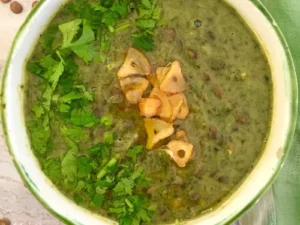Introduction:
Mint leaves, with their invigorating aroma and refreshing flavor, have graced culinary creations and traditional remedies for centuries. Belonging to the Mentha genus, mint encompasses various species, each with its unique characteristics. In this detailed blog, we will explore the origins, types, nutritional profile, health benefits, culinary uses, and considerations surrounding mint leaves.
Origins and Types of Mint:
Global Presence:
- Native to Asia and Europe:
- Mint has a long history, with origins in Asia and Europe. It has since become widely cultivated and adapted to various climates around the world.
- Diverse Species:
- The Mentha genus includes numerous species, with peppermint and spearmint being two of the most well-known and widely used.
Nutritional Profile:
Essential Nutrients:
- Vitamins and Minerals:
- Mint is a source of vitamins A and C, along with minerals like manganese and iron.
- Phytonutrients:
- Rich in phytonutrients, including menthol, menthone, and rosmarinic acid, which contribute to its aroma, flavor, and potential health benefits.
Health Benefits:
- Digestive Aid:
- Menthol in mint helps relax the muscles of the gastrointestinal tract, offering relief from indigestion and gas.
- Anti-inflammatory Properties:
- Rosmarinic acid exhibits anti-inflammatory effects, contributing to the relief of inflammatory conditions.
- Respiratory Health:
- Menthol’s cooling sensation can soothe the respiratory tract, making mint beneficial for respiratory health.
- Antioxidant Defense:
- The presence of antioxidants helps combat oxidative stress and may contribute to overall health.
Culinary Uses:
Versatile Culinary Herb:
- Sauces and Dressings:
- Mint leaves enhance the flavor of sauces, dressings, and marinades, adding a burst of freshness.
- Beverages:
- Widely used in beverages, mint is a key ingredient in refreshing teas, lemonades, and cocktails.
- Desserts:
- Mint is a popular addition to desserts, including ice creams, chocolates, and baked goods.
- Salads:
- Mint leaves elevate the taste of salads, providing a crisp and aromatic element.
Considerations:
Culinary Pairings:
- Complementary Flavors:
- Mint pairs well with various ingredients, including citrus, berries, chocolate, and lamb.
- Balance in Savory Dishes:
- When using mint in savory dishes, balance its flavor to avoid overpowering other ingredients.
Medicinal Preparations:
- Teas and Infusions:
- Mint teas and infusions are popular for their potential digestive and soothing properties.
- Essential Oils:
- Mint essential oils, extracted from the leaves, are used in aromatherapy and topical applications.
Allergies and Sensitivities:
- Mint Allergies:
- While rare, some individuals may be allergic to mint. It’s important to monitor for any adverse reactions.
- Sensitivity in Infants:
- Mint may be too strong for infants, and caution is advised when introducing it into their diet.
Conclusion:
Mint leaves, with their versatility in both culinary and medicinal realms, stand as a testament to the multifaceted offerings of the plant kingdom. Whether used to add a refreshing twist to beverages, elevate the taste of desserts, or contribute to digestive well-being, mint leaves continue to be a beloved herb across cultures. As we savor the distinctive flavor and embrace the potential health benefits, let mint leaves continue to play a vibrant role in our kitchens and holistic approaches to well-being.













